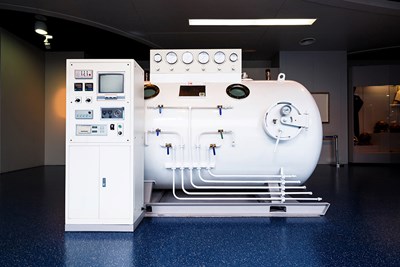Chronic Obstructive Pulmonary Disease (COPD) is a progressive lung condition that makes breathing increasingly difficult over time. Affecting millions of people worldwide, COPD is often caused by smoking or long-term exposure to harmful irritants, leading to symptoms such as chronic cough, shortness of breath, and wheezing. While there is no cure for COPD, various treatments, including oxygen therapy, can significantly improve quality of life for those affected. Oxygen therapy helps ensure that individuals with COPD get the supplemental oxygen their bodies need to function properly, particularly as the disease advances.
A characteristic of COPD is difficulty breathing properly. Many people excuse their increased breathlessness and coughing as part of aging, but in reality, they might be dealing with one of these serious conditions. COPD can develop without noticeable symptoms until later stages of the disease, and that’s why as soon as you notice the following symptoms you should consult with your doctor.
- Increased breathlessness
- Frequent coughing
- Wheezing
- Tightness in chest
Why treat COPD with oxygen therapy?
Carbon dioxide (CO2) is made when your tissues and muscles use oxygen. CO2 is considered a "waste" product of breathing, and it’s important to get rid of it. However, some people with COPD have difficulty getting enough oxygen into their blood and getting rid of CO2. Eventually, their bodies will become unhealthy and stressed. Fortunately, oxygen therapy can help by preventing the complications that occur when blood oxygens drops.
Who is a candidate for oxygen therapy?
If you have low levels of oxygen in your blood, then you are a candidate for long-term oxygen therapy. The therapy is usually used to slow down or prevent right-sided heart failure. However, it should be mentioned that oxygen therapy and other treatments cannot completely cure COPD—only slow down its progression.
There are a few different ways to deliver the oxygen. They include: oxygen concentrators, oxygen-gas cylinders, and liquid-oxygen devices. However, all oxygen systems are portable so you don’t have to stay at home or in the hospital to use oxygen.
That being said, sudden, increased shortness of breath, referred to as COPD exacerbation, is treated with oxygen in the hospital. Subsequent therapy is done at home if the oxygen level in your blood is too low for prolonged periods of time, though.
How frequently do you use oxygen therapy?
Long-term oxygen therapy is used for a minimum of 15 hours a day with few interruptions. To receive the best benefits from the therapy, however, it should be used 24 hours a day. Regular use can decrease the risk of death from low oxygen levels.
Are there any risks with oxygen therapy?
As long as you follow your doctor's orders, there shouldn’t be any risk with oxygen therapy. However, it is important to remember that oxygen is flammable, so you should never smoke or have an open flame around oxygen.
What's the outlook for using oxygen therapy to treat COPD?
Research shows that if you have COPD and low blood oxygen levels and use oxygen for more than 15 hours a day, the quality of your life can increase, as well as your life expectancy. Oxygen therapy has shown to have short-term and long-term benefits in people who have COPD. Oxygen can benefit your heart, reduce shortness of breath, help you stay active, improve your memory, and sleep better.



